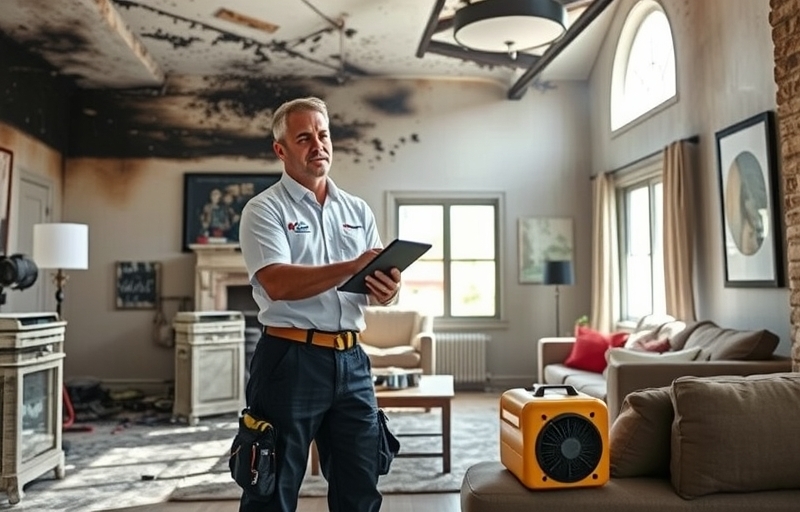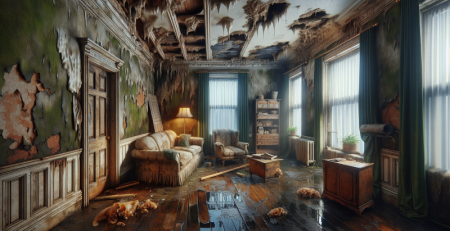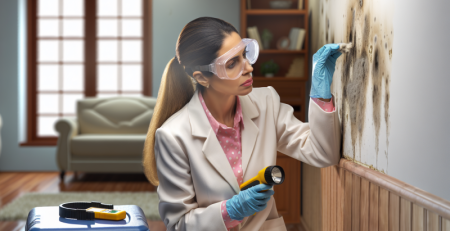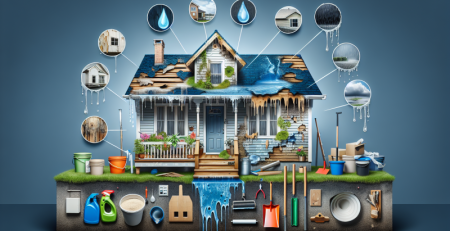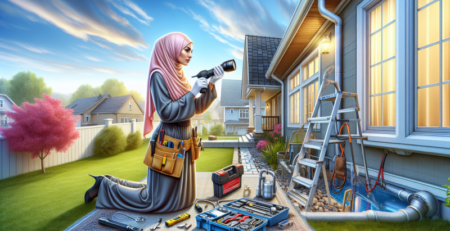Fire Damage Cleanup: What Not to Do
Experiencing a fire in your home or property can be devastating, and the aftermath often leaves homeowners overwhelmed and unsure of what steps to take next. While it’s natural to want to jump into action, knowing what not to do during fire damage cleanup is just as important as knowing what to do. At Kraus Restoration, NJ’s leaders in water and fire damage restoration, we understand the urgency and emotional toll that fire damage can bring. That’s why we’re here to guide you through the process with expert advice and 24/7 emergency services. Our IICRC-certified team specializes in fire damage cleanup, smoke and soot removal, and full property restoration, ensuring your home is safely and efficiently restored. Serving Central and Northern New Jersey, we’re committed to helping homeowners and property managers avoid costly mistakes and get back to normal as quickly as possible. In this blog, we’ll highlight the most common fire damage cleanup mistakes and how to avoid them—so you can protect your property and your peace of mind.
Common Mistakes to Avoid During Fire Damage Cleanup
When dealing with the aftermath of a fire, the urgency to restore your property and return to normal life can lead to hasty decisions. However, fire damage cleanup is a complex process that requires careful planning and execution. Making mistakes during this critical phase can not only delay recovery but also pose serious health and safety risks. Understanding what not to do is just as important as knowing the correct steps to take. Here are some of the most common mistakes homeowners and property managers should avoid during fire damage cleanup.
One of the most frequent errors is attempting to clean up fire damage without professional help. While it may seem cost-effective to handle the cleanup yourself, fire damage often involves hazardous materials such as soot, smoke residue, and potentially toxic chemicals released during combustion. According to the Environmental Protection Agency (EPA), smoke particles can contain harmful substances like carbon monoxide, formaldehyde, and benzene, which can linger in the air and on surfaces long after the fire is extinguished. Without the proper equipment and training, DIY cleanup efforts can expose individuals to serious health risks and may even worsen the damage.
Another common mistake is failing to address water damage that often accompanies fire incidents. Firefighting efforts typically involve large volumes of water, which can saturate building materials and create the perfect environment for mold growth. The Centers for Disease Control and Prevention (CDC) warns that mold can begin to develop within 24 to 48 hours in damp conditions. Ignoring this secondary damage can lead to long-term structural issues and health problems. It is crucial to incorporate water cleanup as part of the overall fire damage restoration plan to prevent further complications.
Delaying the cleanup process is another pitfall. Time is of the essence when dealing with fire damage. The longer soot and smoke residues remain on surfaces, the more difficult they become to remove. These residues are acidic and can cause permanent discoloration and corrosion to walls, ceilings, and personal belongings. According to the National Fire Protection Association (NFPA), immediate action within the first 24 to 48 hours is essential to mitigate damage and reduce restoration costs. Procrastination can also affect insurance claims, as many policies require prompt reporting and documentation of the damage.
Improper disposal of fire-damaged materials is also a significant concern. Some items, such as electronics, insulation, and certain building materials, may contain hazardous substances that require special handling. Disposing of these materials in regular trash can be illegal and environmentally harmful. Always consult with a certified fire damage restoration company to ensure that all debris is disposed of in compliance with local regulations.
Using the wrong cleaning products is another mistake that can cause more harm than good. Many household cleaners are not designed to remove soot and smoke residue and may react chemically with these substances, spreading the contamination or damaging surfaces. For example, ammonia-based cleaners can react with chlorine in soot, releasing toxic gases. Professional restoration teams use specialized cleaning agents and techniques tailored to different materials and types of damage, ensuring a thorough and safe cleanup.
Neglecting to ventilate the property properly during and after cleanup is another oversight. Smoke and soot particles can remain airborne for extended periods, posing respiratory hazards. Proper ventilation helps to clear out lingering odors and contaminants, improving indoor air quality. Using industrial-grade air scrubbers and dehumidifiers can significantly enhance the effectiveness of this process.
Failing to document the damage thoroughly is a mistake that can complicate insurance claims. Before any cleanup begins, it is essential to take detailed photographs and videos of all affected areas and items. Keep a written inventory of damaged possessions, including their estimated value and condition before the fire. This documentation will serve as critical evidence when filing a claim and can expedite the reimbursement process.
Overlooking hidden damage is another common issue. Fire can compromise the structural integrity of a building in ways that are not immediately visible. For instance, wooden beams may appear intact but could be weakened internally by heat. Electrical systems may also be damaged, posing a fire risk if not properly inspected and repaired. A comprehensive assessment by a licensed contractor or fire restoration expert is necessary to identify and address these hidden dangers.
Lastly, not seeking professional guidance throughout the process can lead to costly errors. Fire damage restoration involves multiple steps, including assessment, cleaning, deodorization, repair, and reconstruction. Each phase requires specific expertise and equipment. Partnering with a reputable restoration company ensures that the job is done correctly and efficiently. For example, Kraus Restoration offers a full range of services tailored to fire, water, and mold damage, providing peace of mind and professional results.
“The aftermath of a fire is overwhelming, but avoiding common cleanup mistakes can make the recovery process smoother and safer for everyone involved.”
To summarize, here are some key mistakes to avoid during fire damage cleanup:
- Attempting DIY cleanup without proper equipment and training
- Ignoring water damage and the risk of mold growth
- Delaying the cleanup process, leading to permanent damage
- Improper disposal of hazardous materials
- Using inappropriate cleaning products that can worsen damage
- Neglecting proper ventilation during and after cleanup
- Failing to document damage for insurance purposes
- Overlooking hidden structural and electrical damage
- Not consulting with professional restoration experts
For those seeking expert help, Kraus Restoration provides comprehensive fire damage restoration solutions. Learn more about their approach and experience by visiting their about page or exploring their past projects.
For further reading and resources, consider the following:
- EPA: What is in Smoke
- CDC: Mold After a Disaster
- NFPA: Top Fire Causes
Avoiding these common mistakes not only protects your property but also ensures the health and safety of everyone involved. By taking the right steps and seeking professional assistance, you can navigate the fire damage cleanup process more effectively and restore your home or business to its original condition.
Why Rushing the Cleanup Process Can Cause More Harm
In the aftermath of a fire, it’s natural to want to restore your home or business as quickly as possible. The emotional toll, combined with the desire to return to normalcy, often leads property owners to rush the cleanup process. However, acting too quickly without a proper plan or professional guidance can actually lead to more extensive damage and higher restoration costs in the long run. Fire damage is not just about what is visibly burned. It also includes smoke damage, soot residue, water damage from firefighting efforts, and potential structural weaknesses. Each of these elements requires a specific approach to ensure safe and thorough remediation. Better yet, avoid fire damage altogether with these practical home safety tips.
When cleanup is rushed, there is a high risk of overlooking hidden damage. For instance, soot and smoke can penetrate deep into walls, insulation, and HVAC systems. If not properly cleaned, these residues can continue to emit odors and even pose health risks due to the toxic particles they contain. Additionally, water used to extinguish the fire can seep into flooring and walls, creating the perfect environment for mold growth. Without addressing this moisture correctly, you may soon face a secondary issue that is just as damaging as the fire itself. This is why it’s essential to consider professional fire cleanup services that understand the intricacies of post-fire restoration.
Another danger of hasty cleanup is the improper handling of structural damage. Fire can weaken beams, walls, and ceilings, making them unstable. Attempting to clean or move items in these areas without a structural assessment can be hazardous. Professionals are trained to identify these risks and take the necessary precautions to prevent injury or further damage. Moreover, certain materials, like asbestos or lead-based paint, may become disturbed during a fire and pose serious health risks if not handled correctly. Rushing through cleanup without proper testing and containment can expose you and your family to harmful substances.
It’s also important to consider the emotional and psychological impact of fire damage. Rushing through the process may mean discarding items that could have been salvaged with the right techniques. Sentimental belongings, important documents, and valuable possessions might be unnecessarily lost. Professional restoration teams often have the tools and expertise to restore items that appear beyond saving, offering peace of mind and preserving cherished memories.
Additionally, insurance claims can be compromised by a rushed cleanup. Insurers typically require detailed documentation of the damage before any cleanup begins. If you start cleaning too soon, you might inadvertently remove evidence that is crucial for your claim. Working with experienced professionals ensures that all damage is properly documented and communicated to your insurance provider, helping you receive the compensation you deserve.
Taking the time to plan and execute a thorough cleanup also allows for a more strategic restoration process. Professionals can prioritize tasks based on safety, severity of damage, and long-term impact. This methodical approach not only ensures a more complete recovery but also helps prevent future issues. For example, addressing water damage promptly can prevent mold growth, which would otherwise require additional remediation efforts. If mold does become an issue, specialized mold cleanup services are available to handle it safely and effectively.
Choosing the right restoration partner is key to avoiding the pitfalls of a rushed cleanup. At Kraus Restoration, we understand the complexities of fire damage and offer comprehensive services tailored to your specific needs. Our team is trained to handle every aspect of the restoration process, from initial assessment to final repairs. We take the time to do things right, ensuring your property is not only clean but also safe and fully restored. Learn more about our approach and values by visiting our about page.
In conclusion, while the urge to clean up quickly after a fire is understandable, taking a measured and professional approach is essential. Rushing can lead to missed damage, health risks, compromised insurance claims, and even greater costs down the line. By trusting experienced professionals and allowing the cleanup process to unfold properly, you can ensure a safer, more effective recovery for your home or business. For more information or to get started with a consultation, feel free to contact us today.
In conclusion, dealing with fire damage is a challenging and emotional experience, but knowing what not to do can make a significant difference in the recovery process. Avoid entering the property before it’s deemed safe, don’t attempt DIY cleanup without proper knowledge, and never ignore the importance of professional help. By steering clear of these common mistakes, you can protect your health, preserve your property, and ensure a smoother, more effective restoration. Always consult with certified fire damage restoration experts to guide you through the process and help bring your home or business back to life safely and efficiently.
